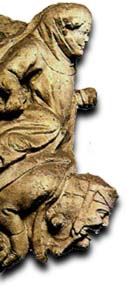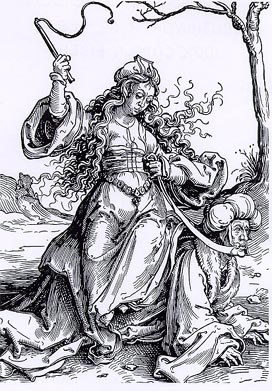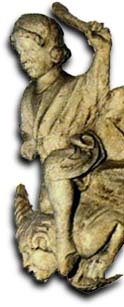 |
 "Phyllis and Aristotle." (Woodcutting by Lucas van Leyden.) |
 |
 |
 "Phyllis and Aristotle." (Woodcutting by Lucas van Leyden.) |
 |
 RISTOTELES,
cum doceret Alexandrum ut RISTOTELES,
cum doceret Alexandrum ut se contineret ab accessu frequenti uxoris suae, quae erat pulcra valde, ne animum suum a communi providentia impediret, et Alexander ei acquiesceret, hoc advertens regina et dolens, coepit Aristotelem trahere ad amorem suum, quia multociens sola transibat cum pedibus nudis et dissoluto crine, ut eum alliceret. Tandem allectus coepit eam sollicitare carnaliter, "Hoc omnino non faciam, nisi videro signaCui conditioni cum consensisset, illa intimavit hoc Alexandro; qui expectans apprehendit eum reginam portantem. Quem cum vellet occidere, ait Aristoteles sic se excusando, "Si sic accidit seni sapientissimo, ut aQuod audiens rex, ei perpercit, et in doctrina eius profecit. |
The concept of the great chain of being gave the medieval mind a way of comparing things from different sections of the chain. This type of comparison goes back to Plato's Republic, where Plato uses the ideal state as a model for the way the properly balanced person should live. What happens in the macrocosm (universe) is reflected in the mesocosm (society) and microcosm (individual).
One popular set of such links was to compare the human dominance
over
animals (especially the horse) to the husband's control of the wife and
the reason's control of passion.
| Macrocosm (universe) |
Mesocosm (society) |
Microcosm (individual) |
|
| horse |
| wife |
| passion |
If the stories of Phyllis and Aristotle and the Wife of Bath invert the proper hierarchy, we can see the proper relationship in the painting "La Virtu che frena il Vizio" ("Virtue Restrains Vice") by Veronese.